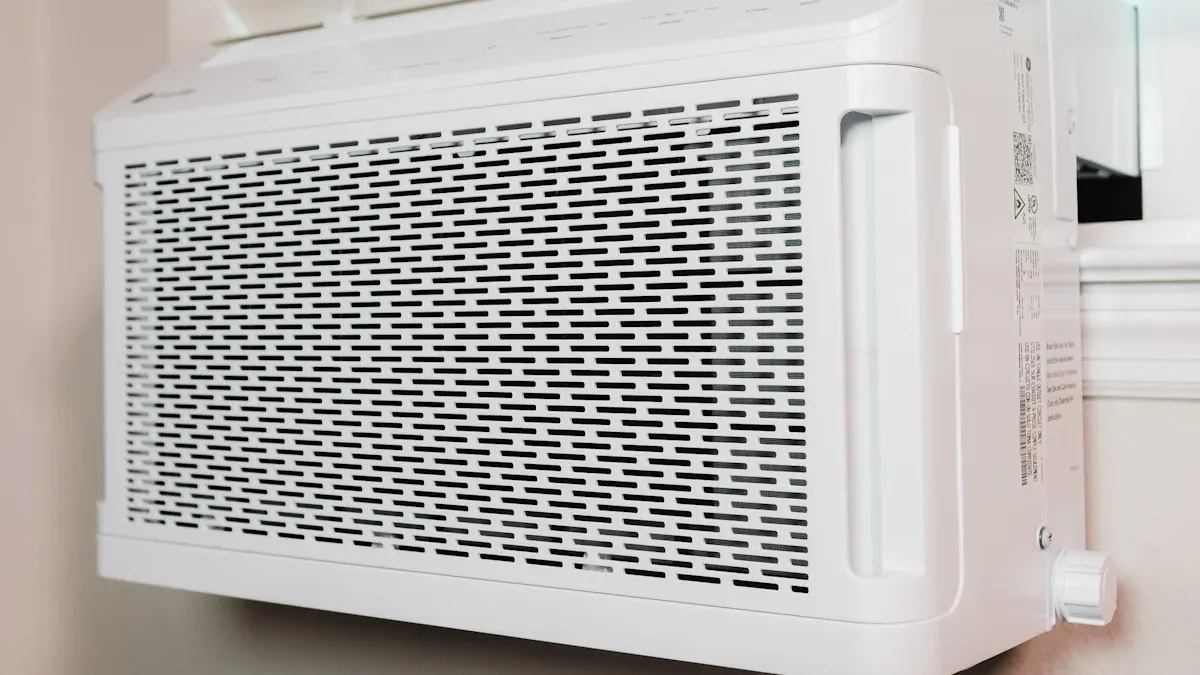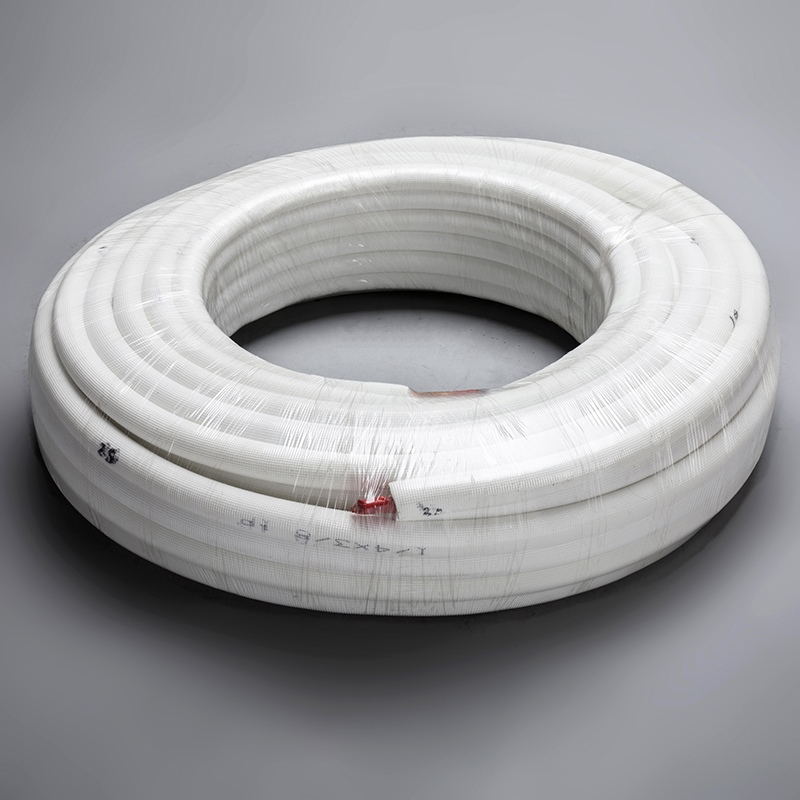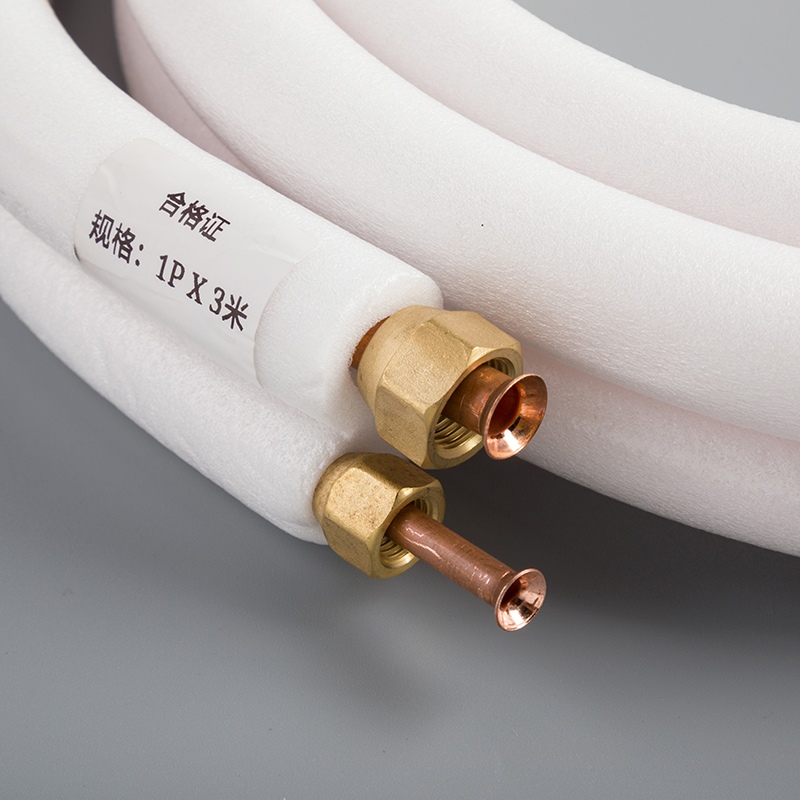Why Air Conditioning Insulation is Essential for Efficiency

Why You Should Consider the Benefits of Air Conditioning Insulation
Air conditioning insulation plays a crucial role in enhancing the efficiency and performance of your HVAC system. By reducing heat transfer, insulation helps maintain consistent indoor temperatures while cutting down on excessive energy usage. Research shows that effective air conditioning insulation can decrease energy costs by an impressive 30-50%, making it a smart investment for both your wallet and the environment. Additionally, high-quality insulation prevents air leaks, which are a major source of energy waste. By improving HVAC efficiency, air conditioning insulation not only lowers utility bills but also promotes environmental sustainability by reducing carbon emissions.
Understanding Air Conditioning Insulation
What is Air Conditioning Insulation
Definition and purpose of insulation in HVAC systems.
Air conditioning insulation refers to materials applied to HVAC components to minimize heat transfer. Insulation acts as a barrier, preventing external heat from entering and conditioned air from escaping. This process ensures that HVAC systems maintain optimal performance levels. Proper insulation reduces energy consumption by preserving the desired temperature within the system. The primary purpose of insulation is to enhance energy efficiency and lower operational costs.
How insulation works to improve efficiency.
Insulation improves efficiency by reducing thermal exchange between the HVAC system and its surroundings. Materials like foam or fiberglass trap air, which slows down heat flow. This mechanism prevents energy loss during air distribution. Insulated systems require less energy to cool or heat spaces, resulting in consistent indoor temperatures. Reduced energy strain on HVAC equipment extends its lifespan and minimizes maintenance needs.
Common Areas Requiring Insulation
Ductwork and its role in energy conservation.
Ductwork serves as a pathway for distributing conditioned air throughout a building. Without insulation, ducts lose significant amounts of energy through heat transfer. Insulating ductwork prevents air leaks and maintains temperature consistency during distribution. This process reduces energy waste and enhances overall system efficiency. Properly insulated ducts also protect against condensation, which can lead to mold growth and structural damage.
Insulating refrigerant lines for optimal performance.
Refrigerant lines transport cooling agents between the indoor and outdoor units of an HVAC system. Uninsulated lines are prone to energy loss due to heat absorption from the surrounding environment. Insulation on refrigerant lines maintains the temperature of the cooling agent, ensuring efficient operation. Reduced heat gain in refrigerant lines improves cooling performance and lowers energy consumption. High-quality insulation materials also prevent condensation, reducing the risk of water damage.
Importance of insulating air handler units.
Air handler units regulate and circulate air within HVAC systems. Insulating these units prevents energy loss during air processing. Proper insulation around air handlers enhances temperature control and improves system reliability. Insulated air handlers reduce noise levels, creating a more comfortable indoor environment. Enhanced insulation also protects internal components from wear and tear, extending the unit's operational life.
Benefits of Air Conditioning Insulation

Energy Efficiency and Cost Savings
Reduction in energy consumption.
Air conditioning insulation minimizes heat transfer and air leakage within HVAC systems. Insulated components reduce the workload on equipment, leading to lower energy consumption. High-quality insulation materials help maintain consistent indoor temperatures, which ensures efficient system operation. Proper insulation can cut energy costs by 30-50%, making it a valuable investment for energy efficiency.
Lower utility bills over time.
Reduced energy usage directly translates into lower utility bills. Insulation prevents energy loss during air distribution, which reduces the need for excessive cooling or heating. Improved efficiency ensures that HVAC systems operate at optimal levels without unnecessary strain. Lower operational costs provide long-term financial benefits for both residential and commercial property owners.
Enhanced System Performance
Prevention of energy loss.
Insulation acts as a barrier that prevents conditioned air from escaping and external heat from entering. This barrier ensures that HVAC systems maintain the desired temperature without additional energy input. Insulated ductwork and refrigerant lines reduce energy loss during air circulation and cooling processes. Enhanced insulation improves system reliability and reduces maintenance requirements.
Improved cooling and heating efficiency.
Insulated HVAC systems distribute air more effectively, resulting in better temperature regulation. Reduced heat transfer allows cooling agents to perform efficiently, which enhances overall system performance. Proper insulation extends the lifespan of HVAC equipment by minimizing wear and tear caused by overworking. Improved efficiency ensures a more comfortable indoor environment for occupants.
Environmental Impact
Contribution to reducing carbon footprint.
Energy-efficient HVAC systems supported by proper insulation produce fewer carbon emissions. Reduced energy consumption lowers the environmental impact of heating and cooling processes. Insulation helps achieve compliance with energy efficiency regulations and green building certifications. A smaller carbon footprint contributes to global sustainability efforts.
Supporting sustainable energy practices.
Insulation promotes sustainable energy use by optimizing HVAC system performance. High-quality insulation materials ensure durability and reliability, which reduces waste from frequent replacements. Proper insulation supports eco-friendly practices by conserving energy and reducing resource consumption. Sustainable energy practices benefit both the environment and future generations.
Types of Air Conditioning Insulation

Foam Insulation
Features and benefits of foam-based insulation.
Foam insulation provides exceptional thermal resistance by reducing heat conduction through structural elements. Materials like polystyrene, polyisocyanurate, and polyurethane form the base of foam insulation. The rigid structure of foam boards ensures durability and effective energy conservation. Spray foam insulation offers superior air-sealing properties and fills gaps or cracks in HVAC systems. Foam insulation minimizes energy loss, enhancing system efficiency and lowering utility costs.
Best applications for foam insulation.
Foam insulation works well in areas requiring high thermal resistance. Foam boards are suitable for insulating walls, ceilings, and HVAC components. Spray foam insulation is ideal for sealing ductwork and refrigerant lines to prevent air leaks. Foam insulation adapts to various environments, making it a versatile choice for residential and commercial applications.
Fiberglass Insulation
Characteristics of fiberglass insulation.
Fiberglass insulation consists of fine glass fibers that trap air, reducing heat transfer. This material is lightweight, cost-effective, and widely used in HVAC systems. Fiberglass fits snugly between studs, joists, and beams, ensuring comprehensive coverage. The moisture-resistant properties of fiberglass make it suitable for different climates. Fiberglass insulation also provides soundproofing benefits, improving indoor comfort.
Pros and cons of using fiberglass.
Fiberglass insulation offers affordability and versatility, making it a popular choice for HVAC systems. The material effectively reduces energy consumption and prevents condensation in ductwork. However, improper installation may lead to gaps, reducing its efficiency. Fiberglass insulation requires careful handling due to potential skin irritation during installation. Regular maintenance ensures long-term performance and durability.
Reflective Insulation
How reflective insulation works.
Reflective insulation uses foil-based materials to reflect radiant heat away from HVAC systems. The reflective surface prevents heat absorption, maintaining consistent temperatures. Lightweight and adaptable, reflective insulation enhances energy efficiency in both residential and commercial settings. Combining reflective insulation with foam or fiberglass provides comprehensive thermal protection.
Ideal scenarios for reflective insulation use.
Reflective insulation performs well in regions with high solar radiation. This type of insulation suits attics, walls, and HVAC ducts exposed to direct sunlight. The lightweight nature of reflective insulation simplifies installation in hard-to-reach areas. Reflective insulation proves effective in reducing cooling costs during hot weather conditions.
Key Considerations for Choosing Insulation
Climate and Environmental Factors
How local climate affects insulation needs.
Local climate determines the type and thickness of insulation required for optimal HVAC performance. Hot climates demand insulation that minimizes heat gain, while cold climates require materials that prevent heat loss. High humidity levels necessitate moisture-resistant insulation to avoid condensation issues. Proper insulation tailored to the climate ensures consistent indoor temperatures and reduces energy consumption.
Adapting insulation to seasonal changes.
Seasonal variations influence the effectiveness of insulation in maintaining energy efficiency. Summer months increase the need for insulation that reflects radiant heat, while winter conditions require materials with high thermal resistance. Insulation upgrades or adjustments during seasonal transitions enhance HVAC system performance. Seasonal adaptation of insulation reduces strain on equipment and lowers utility costs.
Material Durability and Longevity
Evaluating the lifespan of insulation materials.
The lifespan of insulation materials impacts long-term HVAC efficiency and cost-effectiveness. Foam insulation offers durability and resistance to wear, making it a reliable choice for extended use. Fiberglass insulation provides affordability but may require replacement sooner due to potential degradation. Reflective insulation maintains performance in specific conditions but demands regular inspection. Selecting durable materials minimizes maintenance expenses and ensures consistent energy savings.
Maintenance requirements for long-term efficiency.
Regular maintenance preserves the effectiveness of insulation over time. Inspections identify wear, gaps, or damage that compromise thermal resistance. Cleaning and sealing ductwork prevent debris accumulation and air leaks. Replacing deteriorated insulation materials restores HVAC efficiency and reduces energy waste. Proper maintenance extends the lifespan of both insulation and HVAC systems.
Professional Installation vs. DIY
Benefits of hiring experts for insulation.
Professional installation guarantees proper application of insulation materials. Experts assess HVAC systems and recommend suitable insulation types based on specific needs. Trained professionals ensure airtight seals and precise placement, which enhances energy efficiency. Professional services reduce the risk of errors that lead to energy loss or equipment damage.
Risks and challenges of DIY insulation projects.
DIY insulation projects often result in improper installation, leading to reduced efficiency. Lack of expertise increases the likelihood of gaps, air leaks, or insufficient coverage. Handling certain insulation materials without proper safety measures poses health risks. Incorrectly installed insulation may require costly repairs or replacements. Professional assistance eliminates these challenges and ensures optimal performance.
Air conditioning insulation enhances energy efficiency and ensures optimal HVAC performance. Proper insulation minimizes heat transfer, reduces energy waste, and improves indoor comfort. Evaluating current insulation materials helps identify opportunities for energy savings. Upgrading insulation increases cost-effectiveness and supports environmental sustainability. Consulting experts guarantees tailored solutions for specific HVAC needs. Dongguan Baoyuan Refrigeration Accessories Co., Ltd. offers high-quality products like air conditioning copper pipes and connecting pipes to improve system efficiency. Explore the product range at Baoyuan's official link to find reliable insulation solutions.
See Also
Enhance Air Conditioning Efficiency Using Copper Pipe Insulation
Discover The Five Most Efficient Types Of Insulation
The Essential Role Of Pure Copper Pipes In AC Efficiency


